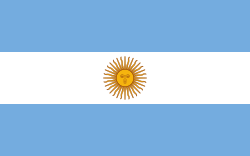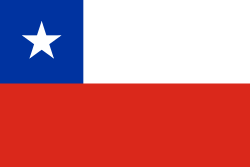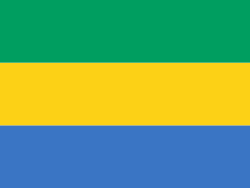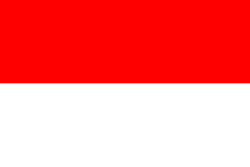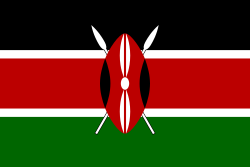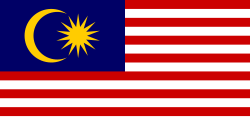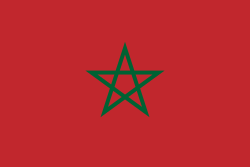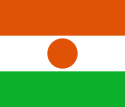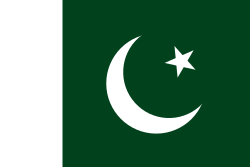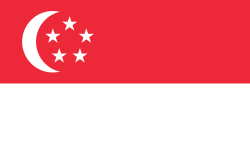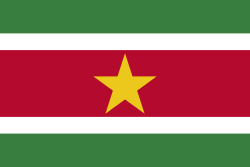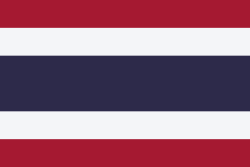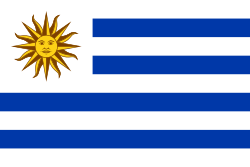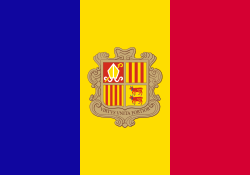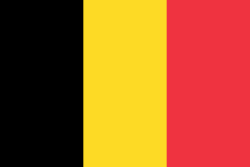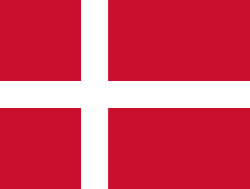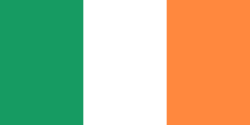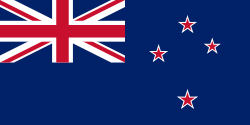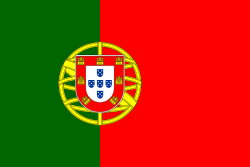Den internationale boykot af sommer-OL 1980
Den internationale boykot af sommer-OL 1980 var en boykot, der blev gennemført mod sommer-OL 1980 i Moskva i Rusland som en protest mod Sovjetunionens invasion af Afghanistan 27. december 1979.[1]
Baggrund
Selv om Den Internationale Olympiske Komité (IOK) ikke ønsker at blande politik og idræt sammen, sagde USAs præsident Jimmy Carter at USA ville boykotte legene i Moskva hvis ikke Sovjetunionen trak sine styrker ud af Afghanistan inden 23. februar 1980. Dette skete ikke, og boykotten blev gennemført.
Stater, der deltog i fuld boykot af legene
Alternative markeringer fra deltagende nationer
Seksten stater, som valgte at deltage under legene, markerede sympati med Afghanistan på forskellige måder. Tretten stater valgte at deltage under det olympiske flag i stedet for deres eget nationale flag. Tre stater valgte at deltage under sit nationale olympiske komités (NOK) flag. Under medalje ceremonier, hvor disse stater havde vundet medaljer, blev henholdsvis det olympiske flag eller NOK flag hejst. Hvis en af disse stater vandt guldmedalje, blev den olympiske hymne afspillet i stedet for nationalsangen.
Stater, der deltog under det olympiske flag
Stater, der deltog under NOK-flag
Stater, der ikke deltog under åbningsceremonien
Syv nationer valgte ikke at deltage ved åbningsceremonien:[2]
Stater, der deltog i åbningsceremonien med kun flagbærer
To nationer deltog i åbningsceremonien med kun flagbærer:
 Storbritannien – Richard Palmer
Storbritannien – Richard Palmer Irland – Ken Ryan[3]
Irland – Ken Ryan[3]
Se også
Kilder
- ^ Smothers, Ronald (19. juli 1996). "OLYMPICS;Bitterness Lingering Over Carter's Boycott". The New York Times (engelsk). Arkiveret fra originalen 14. december 2017. Hentet 15. august 2016.
- ^ "Partial Boycott – New IOC President". Keesing’s Record of World Events. 26: 30599. december 1980.
- ^ "Olympics chief feared protests" (engelsk). Belfasttelegraph.co.uk. 30. december 2010. Arkiveret fra originalen 29. marts 2014. Hentet 15. august 2016.
Medier brugt på denne side
| Flag of Bolivia* | |
|---|---|
| country | Template:I18n/Republic of Bolivia |
| anvendes af | Bolivia |
| fra | 1851 |
| til | Present |
| oprettet af | Government of Bolivia |
| format | 15:22 |
| form | rectangular |
| farver | rød, gul, grøn
flag has 3 horizontal stripes |
| other characteristics | A horizontal tricolor of red, yellow and green. |
National flag of Canada. This file uses RGB specifications, resulting in a brighter red than the Pantone colors recommended by the Canadian government. Even a CMYK printed material cannot render such a red (see explanation in talk page).
Det er let at give dette billede en kant
Flag of the Ivory Coast, written by Jon Harald Søby, modified by Zscout370. The colors match to what is reported at http://fotw.vexillum.com/flags/ci.html.
bendera Indonesia
Flag of Iran. The tricolor flag was introduced in 1906, but after the Islamic Revolution of 1979 the Arabic words 'Allahu akbar' ('God is great'), written in the Kufic script of the Qur'an and repeated 22 times, were added to the red and green strips where they border the white central strip and in the middle is the emblem of Iran (which is a stylized Persian alphabet of the Arabic word Allah ("God")).
The official ISIRI standard (translation at FotW) gives two slightly different methods of construction for the flag: a compass-and-straightedge construction used for File:Flag of Iran (official).svg, and a "simplified" construction sheet with rational numbers used for this file.
Variant version of a flag of Japan, used between January 27, 1870 and August 13, 1999 (aspect ratio 7:10).
Flag of Papua New Guinea
Colours: Pantone 186 C for red and 116 C for yellow
The national flag of Kingdom of Thailand; there are total of 3 colours:
- Red represents the blood spilt to protect Thailand’s independence and often more simply described as representing the nation.
- White represents the religion of Buddhism, the predominant religion of the nation
- Blue represents the monarchy of the nation, which is recognised as the centre of Thai hearts.
Chinese Taipei Olympic Flag. According to the official website of Chinese Taipei Olympic Committee, Blue Sky(circle) & White Sun(triangles) above the Olympic rings is neither the National Emblem of the Republic of China, nor the Party Emblem of Kuomintang (KMT), but a design in between, where the triangles do not extend to the edge of the blue circle, as registered at International Olympic Committee in 1981 and digitally rendered in 2013. Besides, the blue outline of the five-petaled plum blossom is broader than the red one. Moreover, the CMYK code of the blue one and the Blue Sky & White Sun is "C100-M100-Y0-K0", and different from the Olympic rings (C100-M25-Y0-K0). Note that it's the only version recognized by IOC.
Flag of Portugal, created by Columbano Bordalo Pinheiro (1857–1929), officially adopted by Portuguese government in June 30th 1911 (in use since about November 1910). Color shades matching the RGB values officially reccomended here. (PMS values should be used for direct ink or textile; CMYK for 4-color offset printing on paper; this is an image for screen display, RGB should be used.)
Flag of Tunisia until 1999.
Forfatter/Opretter: Heraldry, Licens: CC BY-SA 3.0
Flag of British Honduras
This is the flag of Bahrain used from 5 October 1950 until 14 February 2002. The base image is from the 2002 CIA World Factbook (mirrored at UMSL). I have removed the border and recolored the red section according to Image:Flag of Bahrain.svg.
Flag of South Korea (1949-1984)
The Egyptian flag (1972-1984). Also the flag of Libya (1972-1977) and Syria (1972-1980), when the three countries formed the nominal “Federation of Arab Republics”. (For a map of the federation, see Image:Esl.PNG.)
The Arab text in the scroll held by the “Golden Hawk of Qureish” reads Arabic اتحاد الجمهوريات العربية, ittiħād al-jumhūriyyāt al-`arabiyya, i.e. the Federation (literally “Union”) of Arab Republics — in a quasi-Kufic script (in its original form, with a very ornamental letter dal د).
This is the flag of the Cayman Islands, prior to 1999 (It seems this version is still in use). The base pattern is from HK Blue Ensign and the arms are from the blue ensign. The FOTW was used for the position of the arms.
The three stars mean Grand Cayman(76miles), Cayman Brac(14miles), and Little Cayman(10miles).Flag of Liechtenstein 1937—1982.
1910 Flag of Bermuda (with smaller coat of arms)



